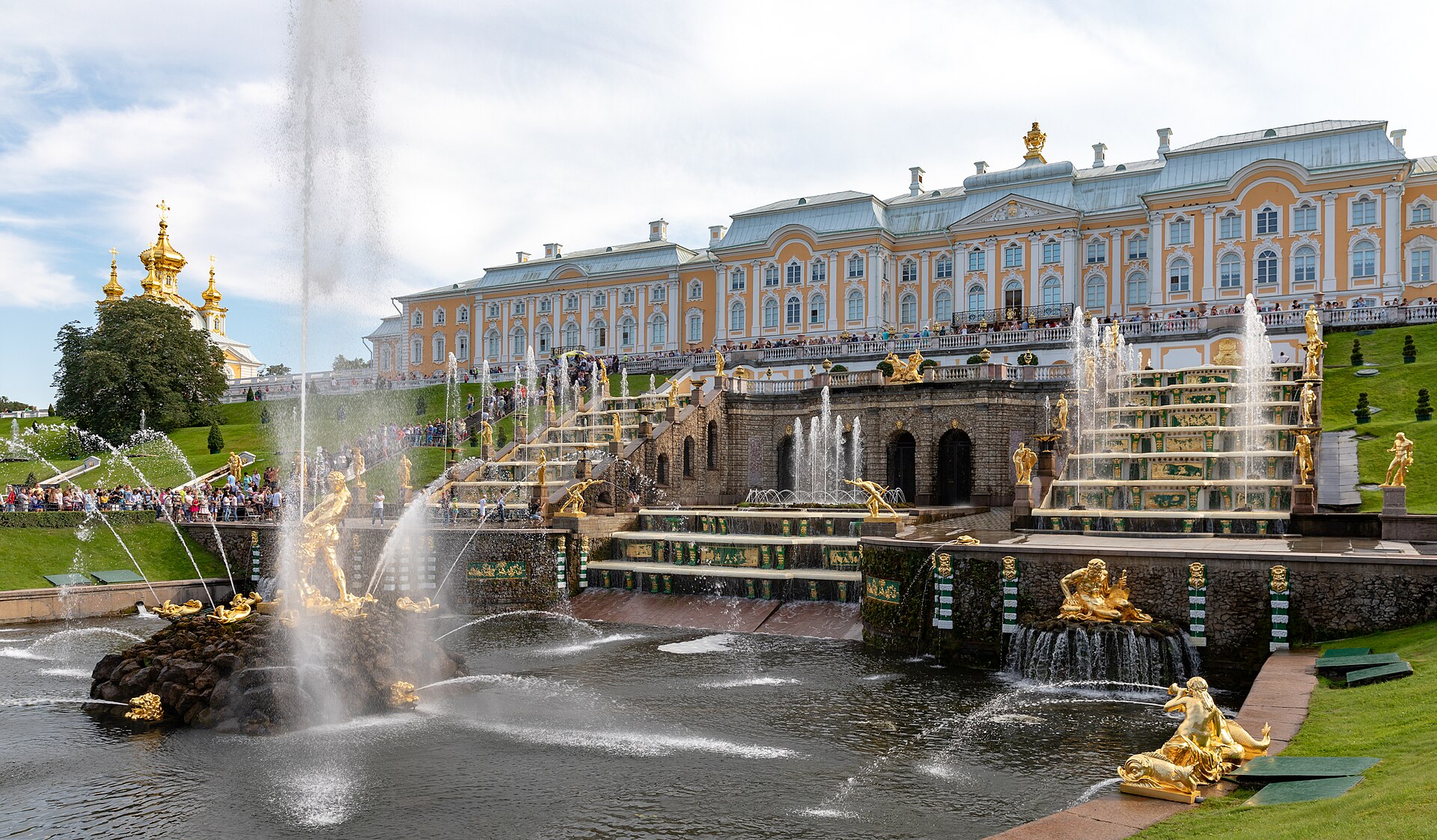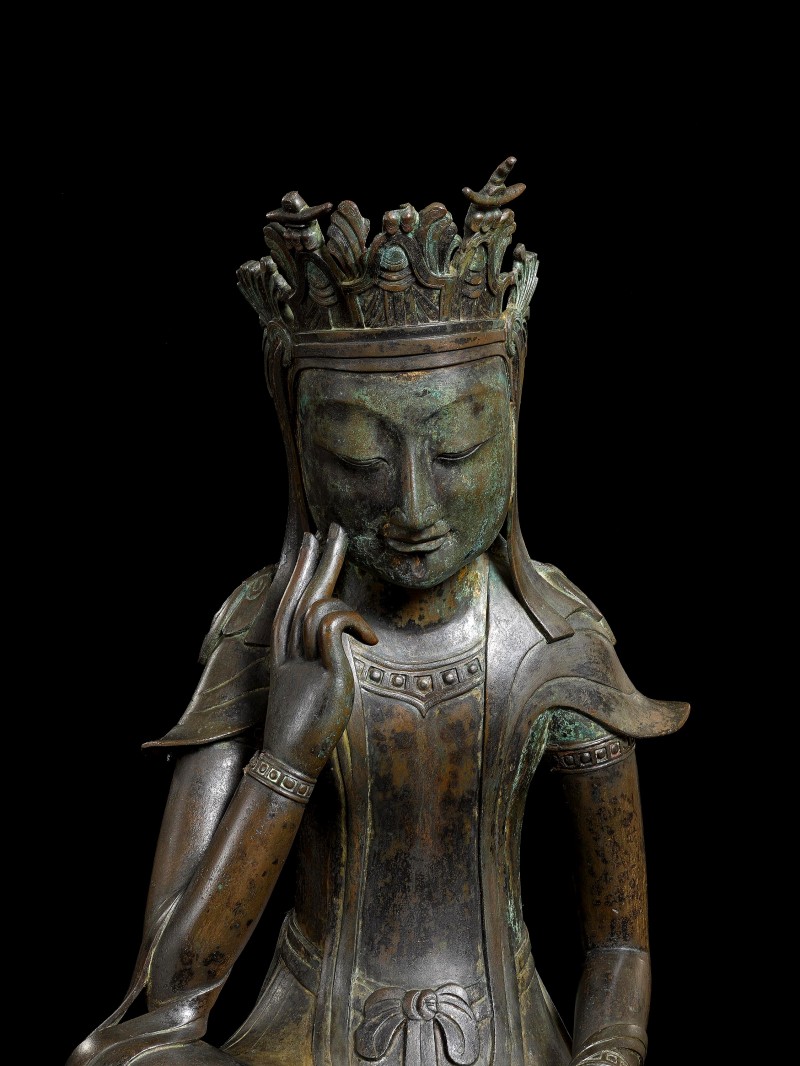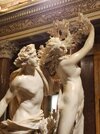You are using an out of date browser. It may not display this or other websites correctly.
You should upgrade or use an alternative browser.
You should upgrade or use an alternative browser.
Beautiful Art: architecture, paintings, sculptures, etc
- Thread starter Pierre
- Start date
Benjamin
The Living Force

The Peterhof Palace is a series of palaces and gardens located in Petergof, Saint Petersburg, Russia, laid out on the orders of Peter the Great. These palaces and gardens are sometimes referred as the "Russian Versailles". The palace-ensemble along with the city center is recognized as a UNESCO World Heritage Site. Peter began construction of the palace in 1714 and it was completed in 1725. Architects: Jean-Baptiste Le Blond and Bartolomeo Rastrelli. Baroque style. (Wikipedia)
zak
The Living Force
Statue of St. George and the Dragon in a last Jugement setting (Painted in the late 17th century by David Klocker von Ehrenstrahl), Stockholm Cathedral.


The most spectacular work of art within the Storkyrkan is the sculpture of Saint George and the Dragon, created in 1489 by Bernt Notke from Lübeck. It is carved from oak, painted and partly gilded, and contains elements of elk (moose) antlers and horse hair. The sculpture is quite large and shows Saint George as a knight on horseback killing a dragon and saving the Virgin.
The work was commissioned by the imperial administrator Sten Sture to commemorate the battle on Brunkeberg, in which the attacking Danish troops were crushed by the Swedes in 1471, saving Stockholm from destruction. The symbolism of Sten Sture (St. George) saving Stockholm from the monstrous Danes is apparent.
Myeong In
The Force is Strong With This One
Gilt-bronze Maitreya in Meditation (금동 미륵보살 반가상) from Three Kingdoms Period of Korea (late 6th century), Height: 83.2cm




The contemplative pose of pensive bodhisattva statues originally derived from the image of Prince Siddhartha meditating on the nature of human life before leaving his palace.

The figure is wearing a magnificent tall crown, uniquely decorated with a sun and moon. This sun and moon design originated from crowns of the Sasanian Empire, before being transmitted via the Silk Road to the East, where it came to be used as a crown for bodhisattva statues.

Elisasheva
Jedi
That's a thread for me 
My favorite painting of all time - "Portrait of Antoine-Laurent Lavoisier and his Wife" by Jacques-Louis David
Look at those details and variety of textures! Incredible.

My favourite cathedral of all time - cathedral Santa Maria del Fiore in Florence.
This needs to be admired live, it's just breathtaking.



My favorite sculpture - Apollo and Daphne by Bernini.
The dynamics, the details, how was it possible to make something like this without god's help?



And my favourite clothing - Chinese traditional clothing Hanfu.
It's so sophisticated, spiritual, simply beautiful. And it comes with various colors and patterns!





My favorite painting of all time - "Portrait of Antoine-Laurent Lavoisier and his Wife" by Jacques-Louis David
Look at those details and variety of textures! Incredible.
My favourite cathedral of all time - cathedral Santa Maria del Fiore in Florence.
This needs to be admired live, it's just breathtaking.
My favorite sculpture - Apollo and Daphne by Bernini.
The dynamics, the details, how was it possible to make something like this without god's help?
And my favourite clothing - Chinese traditional clothing Hanfu.
It's so sophisticated, spiritual, simply beautiful. And it comes with various colors and patterns!
Attachments
It has been a long time wish to have ample time to study Vermeer's painting, 'The Milkmaid,' up close.
The Milkmaid (Dutch: De Melkmeid or Het Melkmeisje), sometimes called The Kitchen Maid, is an oil-on-canvas painting of a "milkmaid", in fact, a domestic kitchen maid, by the Dutch artist Johannes Vermeer. It is now in the Rijksmuseum in Amsterdam, the Netherlands, which regards it as "unquestionably one of the museum's finest attractions".[1]

The Milkmaid (Dutch: De Melkmeid or Het Melkmeisje), sometimes called The Kitchen Maid, is an oil-on-canvas painting of a "milkmaid", in fact, a domestic kitchen maid, by the Dutch artist Johannes Vermeer. It is now in the Rijksmuseum in Amsterdam, the Netherlands, which regards it as "unquestionably one of the museum's finest attractions".[1]
I feel the same about this @Elisasheva ....I mean...Wow! The detail!The dynamics, the details, how was it possible to make something like this without god's help?
Modesty, 1749-52, by Antonio Corradini (1688-1752)
Modesty or Chastity or Veiled Truth by Antonio Corradini is a sculpture completed in 1752 during the Rococo period. Corradini was commissioned by Raimondo di Sangro to sculpt a memorial for his mother in the Cappella Sansevero in Naples, where the marble sculpture remains today.
Modesty was the last in Corradini's series of veiled female nudes. Although the woman’s veil is nearly translucent over her breasts, stomach, and face, in the folds of the veil around her arms, the back of her head, and her hips, there is room for both mystery and the slightest hint of modesty. The veil is immovable, rendering perfect clarity unattainable. In the unattainable exists a longing to see all, longing to seize the veil, discard it, and see what is beneath. Her body draws in the eye, hiding very little of her alluring nature, but the veil still covers her, creating a tension between eroticism and restraint, or perhaps redefining eroticism itself. Even as the viewer studies and wonders about the woman, she gazes aside, as is to make the final decision to refuse to allow the viewer a full picture of who she really is.
Vermeer and luminosity - a fantastic marriage!It has been a long time wish to have ample time to study Vermeer's painting, 'The Milkmaid,' up close.
The Milkmaid (Dutch: De Melkmeid or Het Melkmeisje), sometimes called The Kitchen Maid, is an oil-on-canvas painting of a "milkmaid", in fact, a domestic kitchen maid, by the Dutch artist Johannes Vermeer. It is now in the Rijksmuseum in Amsterdam, the Netherlands, which regards it as "unquestionably one of the museum's finest attractions".[1]
View attachment 66902
 Luminosity softens the painting and - to me - adds almost a 3D effect; rather like a present day photograph.
Luminosity softens the painting and - to me - adds almost a 3D effect; rather like a present day photograph.The Veiled Virgin by Giovanni Strazza was most probably painted in the 1850s. It is my favorite example of the technique:I feel the same about this @Elisasheva ....I mean...Wow! The detail!
Modesty, 1749-52, by Antonio Corradini (1688-1752)
Modesty or Chastity or Veiled Truth by Antonio Corradini is a sculpture completed in 1752 during the Rococo period. Corradini was commissioned by Raimondo di Sangro to sculpt a memorial for his mother in the Cappella Sansevero in Naples, where the marble sculpture remains today.
Modesty was the last in Corradini's series of veiled female nudes. Although the woman’s veil is nearly translucent over her breasts, stomach, and face, in the folds of the veil around her arms, the back of her head, and her hips, there is room for both mystery and the slightest hint of modesty. The veil is immovable, rendering perfect clarity unattainable. In the unattainable exists a longing to see all, longing to seize the veil, discard it, and see what is beneath. Her body draws in the eye, hiding very little of her alluring nature, but the veil still covers her, creating a tension between eroticism and restraint, or perhaps redefining eroticism itself. Even as the viewer studies and wonders about the woman, she gazes aside, as is to make the final decision to refuse to allow the viewer a full picture of who she really is.
View attachment 66907
Trending content
-
-
Thread 'Coronavirus Pandemic: Apocalypse Now! Or exaggerated scare story?'
- wanderingthomas
Replies: 30K -
-

